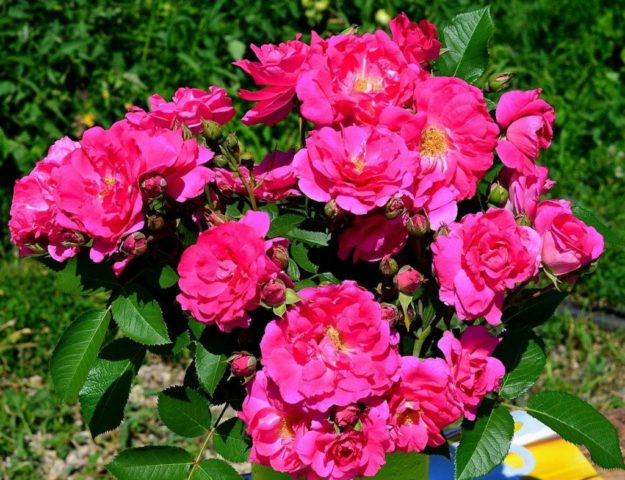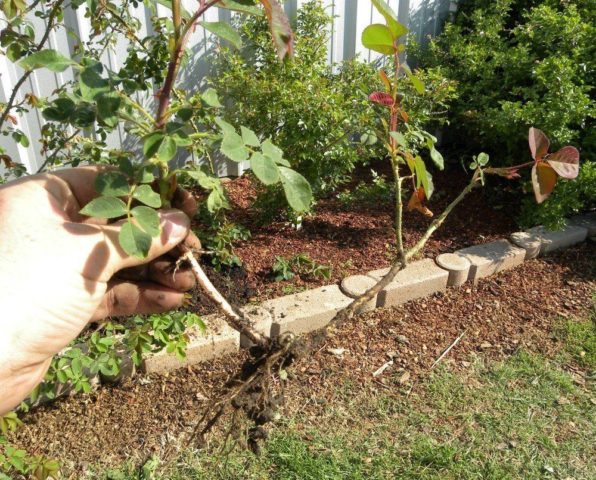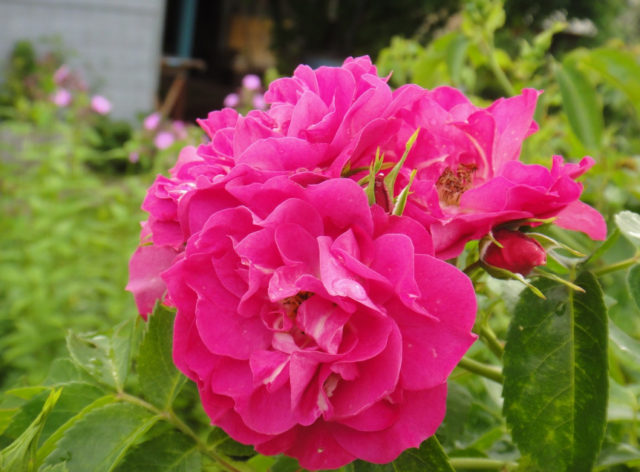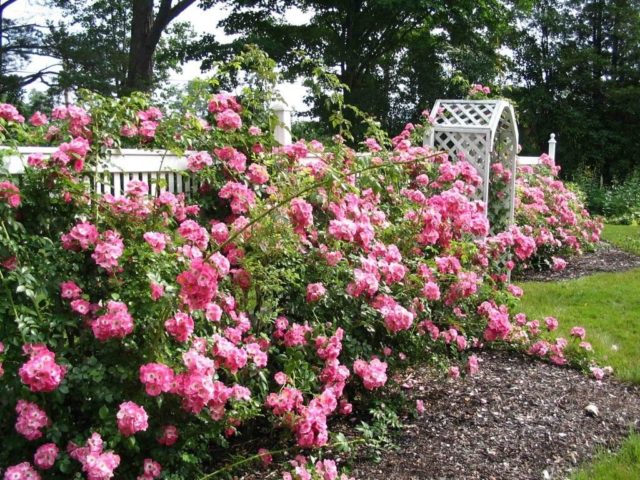Content
Climbing roses are distinguished by early and long-lasting, for more than a month, flowering. They are often used to decorate public areas and private areas. Rose John Cabot is well adapted to keeping in Russian conditions. Planting and growing a seedling will not be difficult even for a novice florist.
Breeding history
John Cabot is the first of the famous Explorer series. The varieties included in it can be advised for growing to novice growers. Their main feature is high frost resistance, because of this quality, Canadian roses endure Russian winters, do not freeze, and quickly restore damaged shoots. They can grow in partial shade and shade, get sick a little, easily propagate by cuttings.
Explorer series frost-resistant roses, including John Cabot variety, are bred in Canada. They were first obtained at the end of the 19th century through complex hybridization between species. In the 60s of the 20th century, varieties appeared not only frost-resistant and resistant to diseases, but also distinguished by long flowering. Rose "John Cabot" was obtained in 1969. The name was given in honor of the Italian navigator, who first visited North America.

John Cabot bushes can have up to 10 flowers on each peduncle
Description and characteristics of the rose variety John Cabot
Each shoot of John Cabot roses has 3 to 10 flowers with purple-red petals, a light center when opened and yellow stamens. The color may fade slightly over time. Flowers are double, broadly cupped in shape, medium-sized - 6 cm in diameter.
The first flowering is lush and long (for 6-7 weeks), the next takes place in the northern regions in mid-autumn, at which time the plant throws out fewer flowers. In the southern regions, rare flowers appear on the shoots after the initial flowering until mid-autumn.
Rose bushes with dense light green glossy foliage, flexible shoots, thorny, sharp thorns, but rare. They can be formed in an arcuate manner so that the stems braid the hedge. Without a support, the rose reaches 1.2-1.8 m in height and width.
Frost resistance can be distinguished from the characteristics of John Cabot roses. The roots and stems of the bushes are able to withstand severe cold, possibly freezing of areas of the shoots that are above the snow level. The rose is suitable for growing in the Central region, as well as in Siberia and the Urals.
Advantages and disadvantages
The dignity of the variety is, of course, frost resistance (the bushes can withstand frosts down to -30 ° C), prolonged and repeated flowering, disease resistance, decorative effect, trouble-free propagation by cuttings and use in landscape design.
There are few shortcomings:
- the presence of sharp thorns;
- slow start of the growing season;
- the second bloom in the northern regions may come late;
- weak aroma of flowers.
Reproduction methods
The John Cabot rose can be propagated by layering, dividing the bush, but the most common method, which also gives a good result, is cuttings. It is started after the end of the first wave of flowering. Pieces of at least 20 cm long are cut from young shoots, the lower leaves (except for two) located at the very top are cut off. The harvested cuttings are placed in a growth stimulant solution for 0.5 days.
After that, they are rooted in a fertile, loose substrate: they are buried by 2/3, they are placed not vertically, but obliquely. Arcs are placed over the cuttings and covered with a film so that it is warm and humid inside. Caring for rooting roses "John Cabot" is simple: they need to be watered, keeping the soil moderately moist (overdrying is unacceptable), loosened carefully. Ventilate the greenhouse every day. Rooting takes 1-1.5 months. It is necessary to transplant the cuttings already at this time, but you can postpone the transplant to a permanent place until the fall.
Layers are dropped in the spring, young shoots are rooted near the bush, without separating from it. Water together with the mother plant. By the fall, many roots will appear on the layers, they are separated from the bush with a shovel along with a lump of earth and transferred to a permanent place. Plants that have grown from cuttings and cuttings bloom the next year after transplanting.

Cutting is a simple and reliable way to propagate roses
Planting and Caring for Canadian Park Rose John Cabot
The time to plant the John Cabot rose is spring or fall. You should choose sunny, open places for her, but she can grow in partial shade without problems. It is preferable to plant on the south side of the site, on the southeast or southwest. There should be no other types of roses among the predecessors of the John Cabot variety. This is necessary, since pathogens and pests can remain in the soil from previous plants.
The best soil for roses "John Cabot" is a mixture of sand, humus, peat and ash. It turns out to be loose, light and nutritious.
You need to plant a rose according to the following algorithm:
- Dig up and level the site.
- Dig a hole 0.7 m wide and deep.
- Two-thirds of it is filled with a substrate, watered so that it is a donkey.
- Place a seedling in the center, sprinkle the roots with earth. The root collar should be 5 cm below the soil level.
- Water and mulch the surface again with some plant material.
The distance between adjacent rose bushes must be at least 1 m.
Caring for a rose "John Cabot" consists of watering, loosening, fertilizing and pruning. Irrigation is carried out mainly once a week, if it is hot, then more often. Pour at least 1 bucket of water under each bush. It is advisable to moisten the soil in the evening.

Top dressing and preventive spraying is carried out 3-4 times per season
In the first season, roses are not fed, but from the second they are fertilized 3 times a year - with organic matter or nitrogen fertilizers, in summer and after flowering - with phosphorus-potassium, nitrogen fertilization should not be.
During the entire period, 2 types of pruning are carried out: in the spring, dry and frozen shoots are removed, the bush is given a neat shape, and faded branches are removed in the summer. Removing shoots stimulates the growth of new ones, on which buds will bloom again in the fall.
For the winter, the root zone of the bushes is covered with a thick layer of mulch. In regions with cold winters, the lashes are removed from the supports, tilted to the ground, and also covered. If this is not done, they may die. In the spring, the shelter is removed with the onset of the first heat.
Pests and diseases
Roses of the "John Cabot" variety are distinguished by stable immunity to diseases, and in order to reduce the likelihood of their occurrence, preventive treatments with fungicides against rust, bacterial cancer, powdery mildew and black spot will be needed. Precautions:
- you can not water the plants too often;
- in the fall, you need to remove and immediately burn all cut off shoots, crumbling leaves.
Rose John Cabot in landscape design
Climbing roses are planted in a specific order, creating living, decorative flowering hedges from them. But they can also become an accent in any composition, decorate gazebos and verandas. To distinguish the John Cabot rose from the total mass of flowers, plants with neutral or light colored buds should be planted next to it.It can be both perennials and annual flowers of various families. The main thing is to choose them so that it is the roses that are in the center of attention.

John Cabot plants look best near fences, railings, arches and gazebos.
Conclusion
Rose John Cabot belongs to the climbing species, well suited for decorating fences, arches and gazebos. The main advantages of the Canadian variety are frost resistance, disease resistance, unpretentiousness, as well as long flowering, which takes place 2 times a year.
Reviews of the Canadian climbing rose John Cabot








